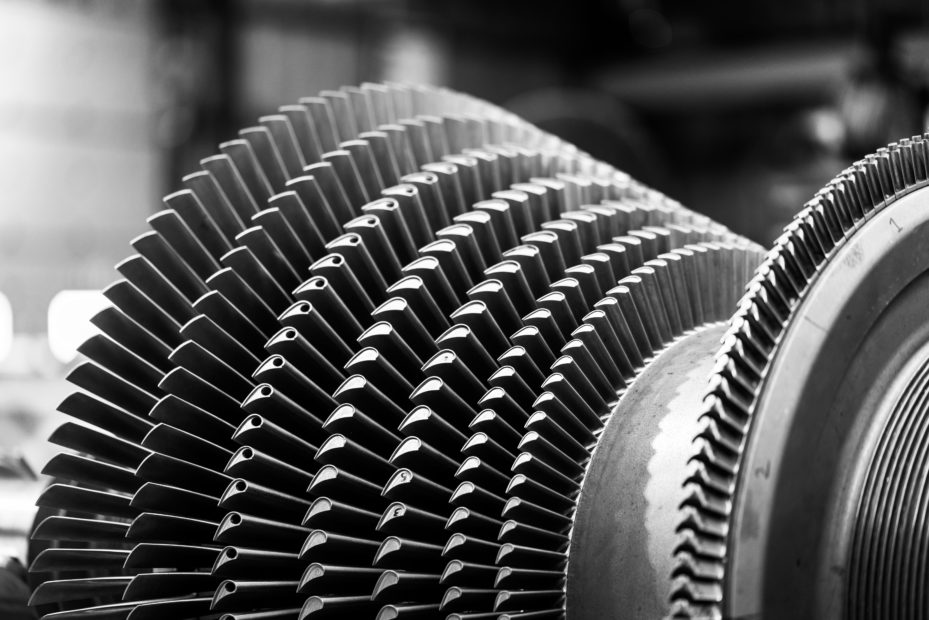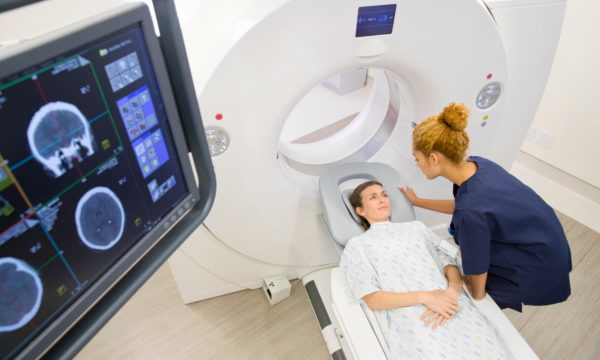New Way Air Bearings® has a long tradition of supporting precision engineering. And now, following in the footsteps of Don Bentley, a man whom we admired and revered for his advancements in the fields of rotordynamics, we’re expanding air bearings into turbomachinery applications. Among their numerous applications, air bearings afford turbomachinery a remarkable combination of stiffness and viscous damping, which we foresee as having a massive impact on the critical operating speeds for turbomachinery shafts.
Critical Speeds and Resonance
Due to the simple fact of imperfect mass distribution, a rotating shaft’s center of mass is never perfectly in line with the axis of rotation, and thus, necessitates shaft balancing and tuning weights. One consequence of this is the phenomenon of critical speeds, which occurs when the shaft’s center of mass induces vibrations. In effect, these speeds—of which a given shaft may have multiple—correspond to a resonant frequency. In turn, vibrations and amplitude increase if the shaft is continually spun at a given speed.
While many machines can operate below their critical, or “whirling” speeds, it’s oftentimes an accepted consequence of a turbomachinery design that the system will operate above or between critical speeds.
 For many machines with shafts hard mounted on contact bearing systems, the only available tool for responding to this phenomenon is to simply accelerate and decelerate through these speeds as quickly as possible, in an attempt to reduce high-life-cycle fatigue on your components.
For many machines with shafts hard mounted on contact bearing systems, the only available tool for responding to this phenomenon is to simply accelerate and decelerate through these speeds as quickly as possible, in an attempt to reduce high-life-cycle fatigue on your components.
Harold D. Nelson and Paul B. Talbert, in the Handbook of Turbomachinery, Second Edition, discuss the design consideration for a given rotor system. Here, they identify the ultimate goal as being “the reduction of synchronous and non-synchronous whirl,” and consider stiffness and damping as being paramount to achieving this goal. Viscous damping is especially beneficial, and they suggest the use of oil-based squeeze film dampers, which allow for external damping of the rotor, provided the excitation doesn’t drive the fluid film beyond its useful linear range.
Figure 1 shows a test of two disks being driven through a range of speeds, up through and including their critical speeds, with the whirl amplitude plotted along the Y-axis.
As we can see, the hard-mounted system produced a whirl amplitude seven times greater than the system mounted on bearings with squeeze-film dampers, greatly reducing vibrations and resonance when passing through the critical speeds of the rotor.
Air Bearings and Resonance
 At New Way, responding to problems isn’t good enough; we foresee a future for turbomachines built on air bearings, eliminating concerns regarding critical speed and resonant behavior. Our air bearings, built on Porous Media™ are entirely unique in their viscous damping capabilities and offer a remarkable blend of stiffness and damping.
At New Way, responding to problems isn’t good enough; we foresee a future for turbomachines built on air bearings, eliminating concerns regarding critical speed and resonant behavior. Our air bearings, built on Porous Media™ are entirely unique in their viscous damping capabilities and offer a remarkable blend of stiffness and damping.
Stiffness and Viscosity
Like the oil-based squeeze film dampers discussed by Nelson and Talbert, New Way’s Air Bearings also operate off the powerful squeeze film effect, meaning the more the fluid film layer is compressed, the stiffer the film layer becomes. This, however, is where the comparisons end. As already noted in our Technical Report 6: Air Bearings for High-Power Turbomachinery, air bearings provide an optimized stiffness-to-damping ratio via their ideal 5-micrometer fly height, as shown in the figure below.
Air bearings provide a higher stiffness than fluid systems and one which is far more resistant to the effects of the temperature of fluid-film damper systems, which can cause their viscosity to drop as rotational speeds increase and maintain operational speeds.
Additionally, fluid-film systems have a stiffness which increases linearly, and as Nelson and Talbert noted, this range can easily be exceeded. Because New Way Air Bearings operate off a micro-thin layer of air, which is vastly more compressible than oil, our air bearings exhibit an exponentially increasing stiffness curve, as shown below.

For turbomachinery applications, this means it’s virtually impossible to load an air bearing passed its useful stiffness. And, so long as proper considerations have been given to weight and balance, the air bearing will provide greater resistance to resonance as the loading increases.
Damping
Damping while passing through the critical speeds themselves is of the utmost importance, and here as well, air bearings products have proven their viscous damping ability. A test conducted by Michael Chiu of MIT, discussed in-depth in Technical Report 3: The Application of Damped Air Bearings For Machine Tools, compared the frequency response of an air bearing system vs. an equivalent roller-bearing-based system for a hypothetical linear system. The results shown below speak for themselves.

While the roller-bearing-based system demonstrated four or more distinct poles, each of which could be fully capable of producing resonant behavior if excited at that frequency for too long, the air bearing system was almost perfectly smooth and trended asymptotic after 2000 Hz, providing virtually no opportunities for resonant behavior to overtake the system.
Ease of Installation
New Way Air Bearings aren’t simply optimized for ease of installation (though they certainly are), they also enable the design of more efficient, long-lasting systems. Especially, when one considers the use of air bearings from the get-go. Radial Air Bearings can be mounted at any point along a rotating shaft, allowing you to support the shaft in the middle, where the first harmonic occurs, and at the two points where the second harmonic would induce off-axis fluctuations.
The ability to position our bearings anywhere (as enabled by our wealth of in-house mounting hardware) allows for any system to be retrofitted with an air bearing system. Additionally, since our New-Seal™ product provides the unique capability of acting as a bearing and seal in one, this can enable shorter rotating shafts. In turn, this means higher whirl speeds and less fatigue over the life cycle of your assembly.
Contact Us
If you’d like to reach out to New Way with questions for us regarding existing products, or you’d like to speak with our dedicated engineering team regarding a turnkey solution, please contact us so we can get to work on your air bearing system!



